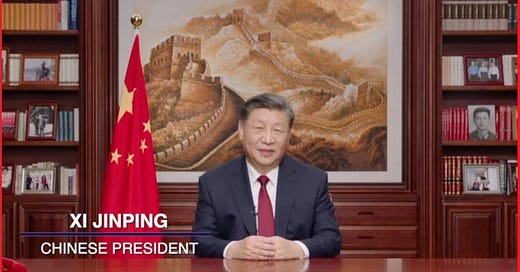Chairman Xi Jinping Pressures Hedge Position In Vietnam With Increased Trade Agreements
By Sundance
Three months ago, I was in Vietnam reviewing just how expansive the positioning of Chinese investment was in the concurrent communist nation. The short version is Beijing’s footprint in Vietnam was already huge.
As an outcome of the 2018 tariffs against China, which coincided with a President Trump visit to southeast Asia, multiple companies shifted manufacturing operations from China to Vietnam. Beijing saw the move and slowly increased their own strategic footprint.
In the subsequent years as COVID-19 took attention from all other matters, and with Trump removed from the equation in 2020, China increased the scale of their investment and the outcomes in 2025 are very visible. China even built this massive Disney type village in Phu Quõc (it’s nearly empty).
The people who live in Vietnam do not have money, they are a very poor nation. The baseline poverty level, in combination with their communist regime politics, essentially eliminates their consumer power to purchase western goods and makes trade agreements between the U.S and Vietnam somewhat moot. However, as a proxy manufacturing nation Vietnam is a valuable resource for China.
Essentially what can be seen in Vietnam is how Beijing spends money there for influence. The U.S footprint is negligible in comparison to the visible influence of China.
Chinese Chairman Xi Jinping is in Vietnam right now making trade deals with the allied communist government. At this point with so much Beijing influence money already in place, China can request very strategic terms.
HANOI, April 14 (Reuters) – China’s President Xi Jinping on Monday called for stronger ties with Vietnam on trade and supply chains amid disruptions caused by U.S. tariffs, as he attended the signing in Hanoi of dozens of cooperation agreements between the two Communist-run nations.
The visit, planned for weeks and part of a wider trip in Southeast Asia, comes as Beijing faces 145% U.S. duties, while Vietnam is negotiating a reduction of threatened U.S. tariffs of 46% that would otherwise apply in July after a global moratorium expires.
“The two sides should strengthen cooperation in production and supply chains,” Xi said in an article in Nhandan, the newspaper of Vietnam’s Communist Party, posted ahead of his arrival on Monday. He also urged more trade and stronger ties with Hanoi on artificial intelligence and the green economy.
After he met Vietnam’s top leader To Lam, the two countries signed dozens of cooperation agreements, including deals on enhancing supply chains and on cooperation over railways, footage of the documents reviewed by Reuters showed.
Chinese and Vietnamese state media later on Monday reported that 45 agreements were signed.
[…] Vietnam is a major industrial and assembly hub in Southeast Asia. Most of its imports are from China while the United States is its main export market. The country is a crucial source of electronics, shoes and apparel for the United States.
In the first three months of this year, Hanoi imported goods worth about $30 billion from Beijing while its exports to Washington amounted to $31.4 billion, Vietnam’s customs data show, confirming a long-term trend in which imports from China closely match the value and swings of exports to the U.S. (read more)




